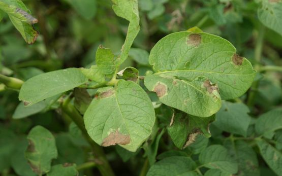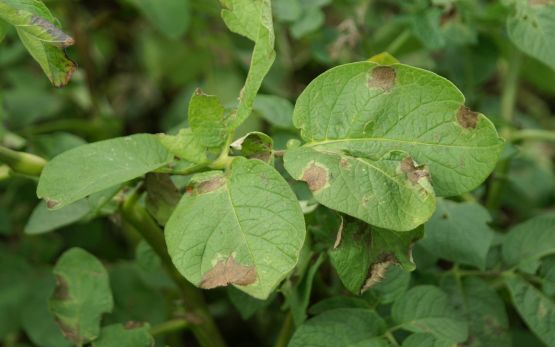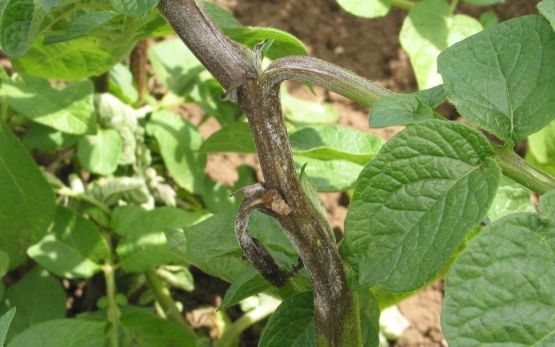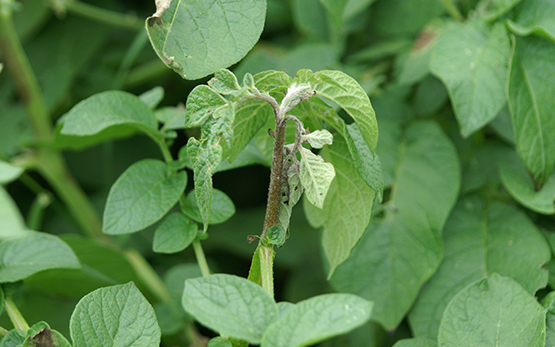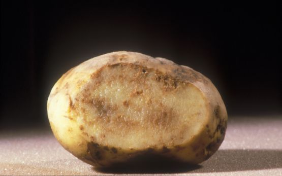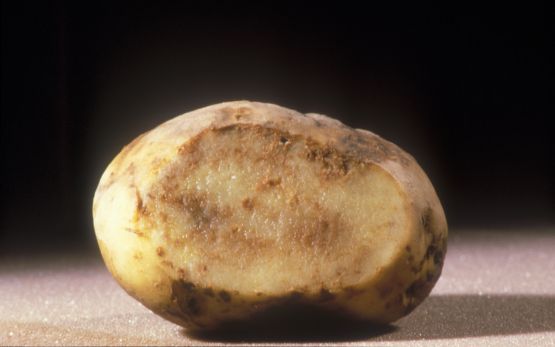Late blight, caused by the oomycete Phytophthora infestans, is the most devastating disease affecting potatoes. Without protective measures, fields with susceptible potato varieties can be completely destroyed within a few days.
The pathogen has several ways of infection:
It overwinters in infected tubers and is introduced into the field in spring during planting. As the potato plants develop, the pathogen colonizes stems and leaves, leading to what is known as the primary infection. This initial stage is typically observed in spring on individual plants scattered throughout the crop. Possible sources of primary infection include potato dumps and volunteer plants.
These initially infected plants produce sporangia which are dispersed rapidly by wind under warm, humid weather conditions in spring and summer, leading to secondary infections of leaves and stems. Sporangia can also be washed into the soil by rain, where they may infect developing tubers.
A third infection pathway involves sexual reproduction: the formation of oospores, which can persist in the soil for extended periods and later infect tubers directly from the ground.
Symptoms
Infected plants can usually be recognised by browning at the base of the stem or on individual parts of the stem. The yellowish-green spots on the lower leaves quickly turn chocolate brown.
These spots grow rapidly under warm and humid weather conditions. In the early morning hours, greyish-white fungal material can be seen on the lower side of the leaves in the light green transition zone between diseased and healthy tissue. The pathogen can also occur on shoot tips, stems and tubers.
Warning and Advisory Service for the Control of Potato Late Blight Phytophthora infestans: PhytoPRE
Early detection of disease – cultivation of resistant varieties
Thanks to the decision support system PhytoPRE, late blight outbreaks in Switzerland are detected at an early stage, allowing timely protection of potato fields. As a preventive measure, it is generally recommended to control volunteer potatoes from the previous year and to cultivate healthy seed potatoes and resistant varieties.
Resistant potato varieties require significantly fewer applications of plant protection products. Susceptible varieties such as Bintje, Erika, and Concordia typically require an average of eight treatments per season. In contrast, resistant varieties like Acoustic and Twinner generally need only two to three sprayings.


.png)
.png)
